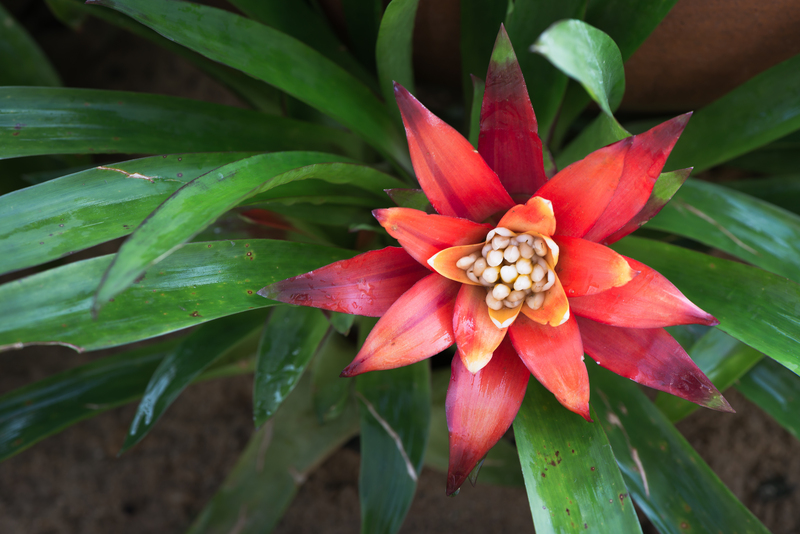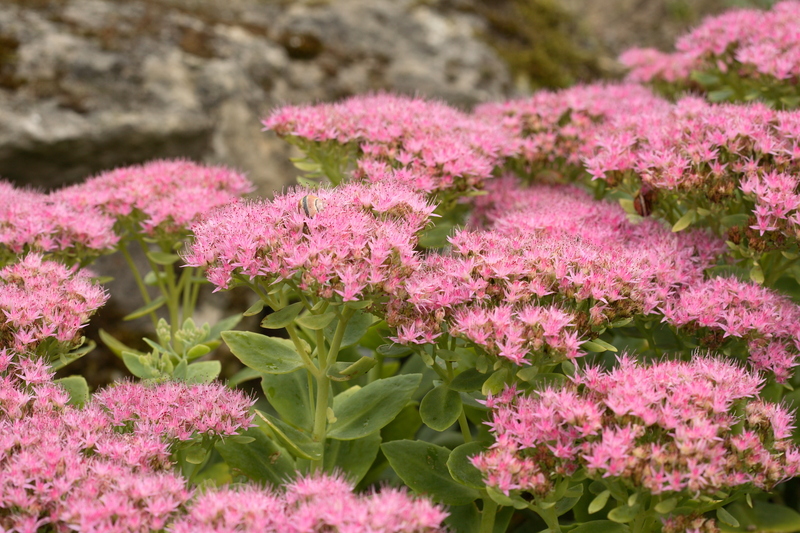Innovative Techniques for Hedge Trimming Designs
Posted on 01/07/2025
Innovative Techniques for Hedge Trimming Designs
When it comes to landscaping and garden aesthetics, the art of hedge trimming can transform ordinary greenery into living masterpieces. Innovative hedge trimming designs integrate artistry, creativity, and horticultural expertise, offering stunning curb appeal and functional landscaping. Whether you're a professional landscaper or a passionate gardener, mastering advanced techniques for shrub shaping is essential for elevating your garden's overall appearance.

Understanding the Art of Hedge Trimming
Hedge trimming is more than routine maintenance; it's a blend of horticultural science and design sensibilities. The craft involves shaping, controlling growth, and nurturing healthy hedges while achieving decorative or architectural forms. Contemporary approaches to hedge clipping emphasize sustainability, precision, and artistic expression. Read on to discover a comprehensive guide to cutting-edge trimmer methods and innovative hedge designs that can rejuvenate any landscape.
Benefits of Creative Hedge Cutting
- Enhanced Visual Appeal: Well-trimmed hedges instantly attract attention and add structure to gardens.
- Improved Plant Health: Prudent cutting encourages denser, healthier growth and deters disease.
- Increased Property Value: Professional landscaping--including creative shrub shaping--may boost overall property value.
- Functional Landscaping: Hedges can provide privacy, windbreaks, and wildlife habitats.
Essential Tools for Innovative Hedge Trimming
Before delving into inventive designs, equip yourself with the right tools. Advanced hedge trimming often requires a selection of high-quality equipment:
- Electric or Manual Hedge Trimmers – For even, powerful cuts.
- Pruning Shears and Loppers – For precision work and thick branches.
- Topiary Frames and Guides – Helpful for achieving intricate or geometric patterns.
- String Lines and Stakes – To mark out straight lines or curves with accuracy.
- Safety Gear – Gloves, eye protection, and sturdy clothing.
Trending Hedge Trimming Designs and Styles
The world of innovative hedge shaping continually evolves. Let's explore some of the most captivating and popular trimming designs trending in modern landscaping:
1. Geometric Patterns & Modern Minimalism
- Box Shapes: Achieve crisp rectangles and squares that suit modern architecture.
- Balls or Domes: Soft, rounded shapes that add rhythm and repetition to a garden.
- Triangular Forms: Offer visual interest and a structured, clean-cut style.
Tip: Use string and stakes as light guidelines for flawless symmetry and even contours.
2. Topiary Art - Living Sculptures
- Animal Figures: Create whimsical garden focal points by trimming hedges into birds, rabbits, or other creatures.
- Spirals and Corkscrews: Popular for entryways and garden borders, offering dynamic motion.
- Lettering and Abstract Forms: Customize with initials, logos, or artistic shapes.
Topiary sculptures require patience and years of dedicated shaping, representing the pinnacle of hedge artistry.
3. Naturalistic Curves and Flowing Lines
- Eschew hard edges in favor of organic, flowing contours reminiscent of waves, clouds, or gentle hills.
- Blends seamlessly with cottage and native gardens, creating visual movement and harmony.
This technique requires a steady hand and keen eye for proportion, but the payoff is a lush, inviting landscape.
4. Layered and Tiered Hedges
- Multi-Level Planting: Trim hedges at different heights to create depth and dimension.
- Staggered Edges: Especially effective for sloped gardens or creating privacy screens with aesthetic flair.
Advanced Hedge Trimming Techniques
Successful hedge sculpting techniques blend creative vision with horticultural best practices. Employ these advanced strategies for flawless, innovative results:
1. Progressive Shaping (Gradual Refinement)
- Start with rough shapes using trimmers, then refine details progressively as the plant grows.
- Iterative pruning is gentler on the plant and produces more refined, intricate shapes over time.
2. Clip and Grow Method
- Alternate between trimming and allowing natural growth cycles, shaping with each successive season.
- Encourages healthy regrowth and accommodates incremental adjustments to the design.
3. Framing and Guiding
- Utilize wire frames, cardboard templates, or plywood cutouts as visual aids for complex or repetitive patterns.
- This is especially useful for topiary art or formal geometric designs.
4. Reverse Taper for Stability
- Maintain a slightly wider base and narrower top (like a pyramid) to ensure sunlight reaches the hedge base.
- Prevents thinning at the bottom and keeps overall greenery healthy and robust.
5. Restoration Trimming
- Revitalize overgrown or neglected hedges through staggered pruning, gradually bringing them back to the desired shape without shocking the plant.
Choosing the Right Hedge Species for Shaping
Not all hedge varieties are equally suitable for intricate or innovative trimmer designs. The best species for advanced shaping are those that respond well to regular clipping and produce dense, flexible foliage.
- Boxwood (Buxus): Classic choice for topiary and precise shapes due to its small leaves and tolerance for frequent trimming.
- Yew (Taxus): Hardy and long-lived with dense, dark green foliage, perfect for geometric and sculptural forms.
- Privet (Ligustrum): Fast-growing, resilient, and adapts well to complex, custom shapes.
- Holly, Hornbeam, and Euonymus: Also suitable for creative hedge designs and unique cuts.
When selecting plants for artistic hedge trimming, consider growth rate, climate adaptability, and desired final height and width.
Sustainable and Eco-Friendly Trimming Practices
With growing awareness of environmental stewardship, modern hedge cutting techniques often prioritize sustainability. Here are ways to minimize ecological impacts while achieving beautiful results:
- Time Trims for Wildlife: Avoid major pruning between March and August, as birds may be nesting.
- Compost Clippings: Shredded hedge trimmings make excellent mulch or compost, returning nutrients to the soil.
- Use Cordless, Low-Emission Tools: Battery-powered or manual trimmers reduce fossil fuel reliance and noise pollution.
- Encourage Biodiversity: Integrate flowering or berry-bearing species to attract pollinators and support garden ecosystems.
Common Mistakes in Modern Hedge Design (and How to Avoid Them)
- Cutting Too Early or Late: Pruning at the wrong season can damage plants or inhibit flowering.
- Improper Angles: Shearing sides too steeply can block sun from reaching the hedge base, causing sparse growth.
- Over-clipping: Excessive trimming stresses plants and may reduce vigor.
- Neglecting Maintenance: Innovative shapes require regular attention and care to maintain their design integrity.
Tips for Achieving Professional Results with Innovative Hedge Trimming
- Step Back and Assess: Frequently view your work from different perspectives to catch irregularities or asymmetry.
- Sharp Tools, Clean Cuts: Well-maintained blades make smoother, healthier cuts that heal quickly.
- Plan Your Design: Sketch ideas or use garden design software before beginning complex projects.
- Practice on Less Visible Areas: Build skills by experimenting on side or rear hedges before tackling focal points.
- Consult with Experts: For ambitious projects, consider advice or collaboration with professional landscape designers or topiary artists.
The Future of Hedge Design: Technology and Innovation
Emerging technologies are transforming how gardeners approach creative hedge cutting techniques. Here are some innovations shaping the future of landscape artistry:
- Robotic Hedge Trimmers: Automated machines can maintain repetitive shapes with precision and efficiency.
- Augmented Reality (AR) Apps: Visualization tools allow users to project potential hedge shapes onto their actual landscape before trimming begins.
- Laser-Guided Tools: Help achieve flawless cuts and symmetry, especially for formal patterns and topiary.
- Smart Plant Monitoring: Sensors and smart irrigation systems ensure hedges receive ideal nutrients and water, supporting growth of complex structures.

Frequently Asked Questions about Advanced Hedge Trimming Designs
How often should I trim hedges for innovative designs?
Most designs benefit from two to three trims per year during the active growing season, but this can vary with plant species and complexity of the design.
Are there fast-growing plants suitable for creative hedge trimming?
Yes. Privet, Lonicera nitida, and Elaeagnus are vigorous growers that respond well to shaping, ideal for those wanting quicker results.
What about formal vs. informal designs?
Formal designs (straight lines, geometric shapes) require meticulous attention and regular maintenance. Informal designs (curved, unruly) are more forgiving and typically blend well with natural gardens.
Can I transition an old, overgrown hedge into a new design?
Absolutely! Use restoration trimming over several seasons to gently reshape the hedge and rejuvenate its growth.
Do artistic hedge designs increase property value?
Well-maintained, unique hedges greatly enhance curb appeal, which can translate to increased property attractiveness and value, especially in competitive real estate markets.
Conclusion: Transform Your Garden with Innovative Hedge Trimming
From crisp, geometric hedge shapes to whimsical animal topiary and flowing artistic contours, innovative techniques for hedge trimming offer endless possibilities for creative expression. With the right tools, careful planning, and a touch of imagination, you can craft living sculptures that redefine your outdoor space.
Whether you seek the elegance of formal lines, the softness of natural curves, or the playfulness of topiary, mastering modern hedge design techniques ensures your garden stands out for years to come. Embrace new technologies, respect the living medium you work with, and don't be afraid to experiment and push boundaries. Your landscape is your canvas--make every hedge a work of art!

